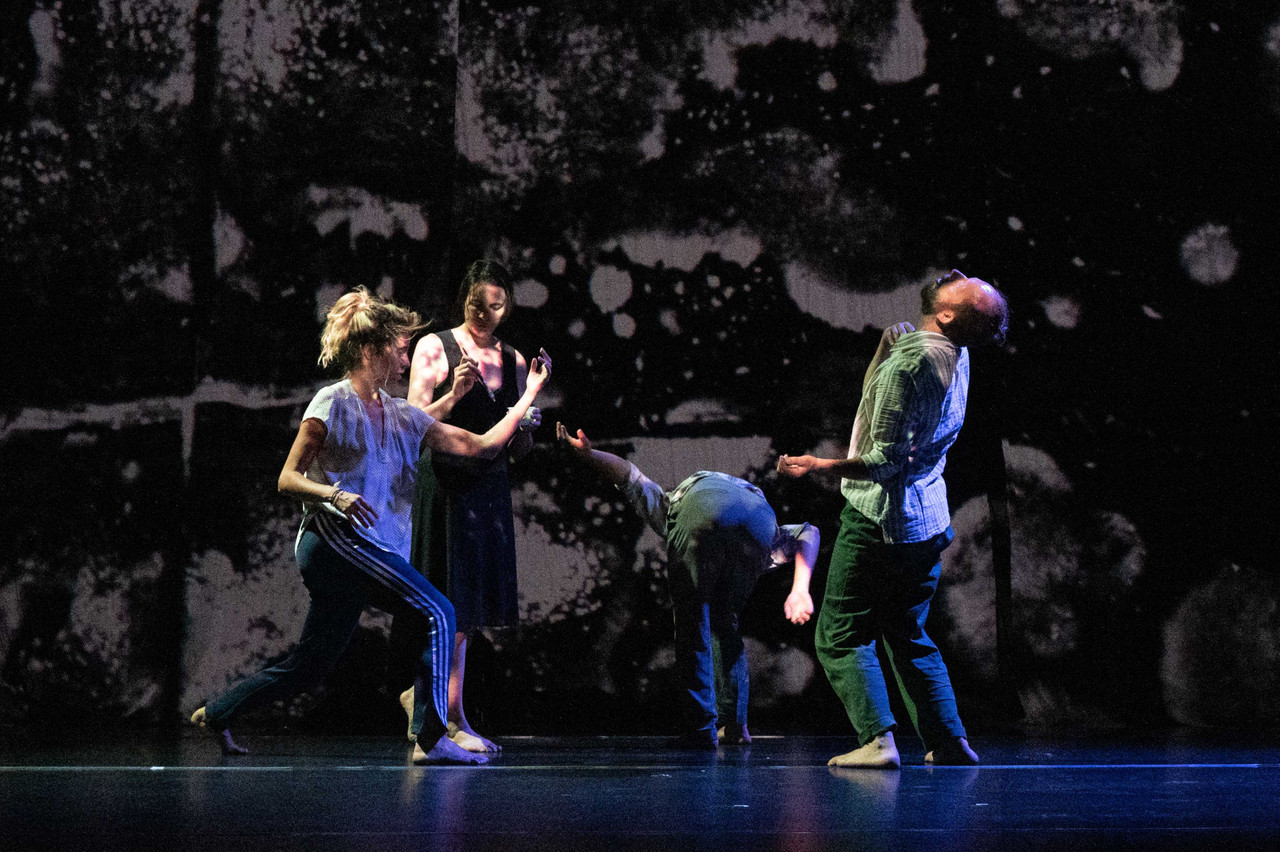Abigail Okorodus: What does Choreochroma mean and what’s the story behind the project?
Rhiannon Morgan: ‘Choreo’ stems from choreography and the Greek word ‘chroma’ means colour. Because it’s a multidisciplinary performance that combines dance, visual arts and painting, the title represents this combination of choreography and colours and reflects the aim of this project, which is really to bring these different art forms together on stage.
So how did it all begin?
It’s a long process because it’s an Esch2022 and Novi Sad 2022 project, which is also a European capital of culture. Two years ago, the European capitals of culture had a program called Tandem, where they matched partners from different capitals of culture with the aim to bring different artists together and propel collaborations. Through this programme, we met our partners from the Pavle Beljanski Memorial Collection museum in Novi Sad and started dialogues with them. The starting point for the project originated from the Luncheon in the Grass painting by the famous Serbian painter Sava Sumanovic, and discussions ensued to transform this painting into dance. Two years down the road, we have a multidisciplinary project combining dance performance with video projection and live painting on stage.
What are the differences and similarities that exists between all these art forms and why did you decide to merge them with dance?
Lucoda’s vision is really to find new methods of creation and collaboration. There are multiple brains behind the project because we didn't want to impose our vision of things but be nourished by these different artists and multiple backgrounds to produce something that would represent all of us. Choreochroma represents multiple visions brought together and that’s the uniqueness of it.
The difficulties are that we are people from different backgrounds with different codes of creation. For example, a painter works differently than a dancer, visual artist, light designer or videographer. So it’s interesting to combine all of these different methods of working and find a common ‘playground’ because at the end of the day it’s about having fun, and we’re inspired to go further and push the boundaries of dance--because that’s my field--to see what we can create when we work together. This is the way we can go further, together. I hope we can continue to create these kinds of projects after Esch2022 because they are just incredibly multi-dimensional and unique processes.
Is the current cultural awareness and social engagement by residents able to accommodate these collaborative expectations beyond the dance scene?
I think Esch2022 is a starting point. The theme for the cultural year is to remix and I think that has triggered different artists to rethink how they want to share their art. So Esch2022 has really set in motion this dynamic between artists. It’s a bit too early to know how it's going to develop but there are incredible projects happening this year. Never in Luxembourg has culture been so present.
For dance, which is a very peculiar art form, it may not be as popular as music or theatre, [but] I think the visibility that Esch2022 has given it has sowed the seeds for the future and is encouraging artists to carry on because it’s now up to us after this European capital of culture to continue this dynamic, reach out to other artists and be daring. Personally, I may not have dared to even consider a European collaboration with another country because it’s kind of a scary process to do it by yourself, but Esch2022 has set this off and suddenly you begin to ask yourself, why not this or that possibility. I think artists are going to be much more open and curious and willing to try new things.
It’s too early to see what Esch2022 will leave behind but I’m sure it will be a legacy of incredible dynamics, collaborations and projects that will continue.
What are your expectations for the Choreochroma project?
This is a multidisciplinary project with a lot of technical elements. On a practical basis, I hope all the technical elements work because it involves heavy technical production. For the guests coming to watch the performance, I think that they will ask themselves new questions. That’s the role of art to me--to give the space to the audience to ask questions, see things in a different way and be inspired.
Can you tell me a bit more about the film screening taking place before the dance performance on both days?
So based on the painting we created a short film around the scene of the picnic from a painter’s standpoint. We will be re-enacting the picnic in Belval to give the audience a teaser. The film is produced by Chantal Maquet, who is the painter in this project, and guests will enjoy some drinks beforehand.
Any last words before the show starts?
In these difficult times that we are living with the war and after two years of covid and all the things that we’re going through individually, I think it is important to see that we can work together, co-create, share and get over differences regardless of our different backgrounds. We are artists of different age groups and to see that we can work together for a common purpose is humbling.
to book a spot and for more details.

